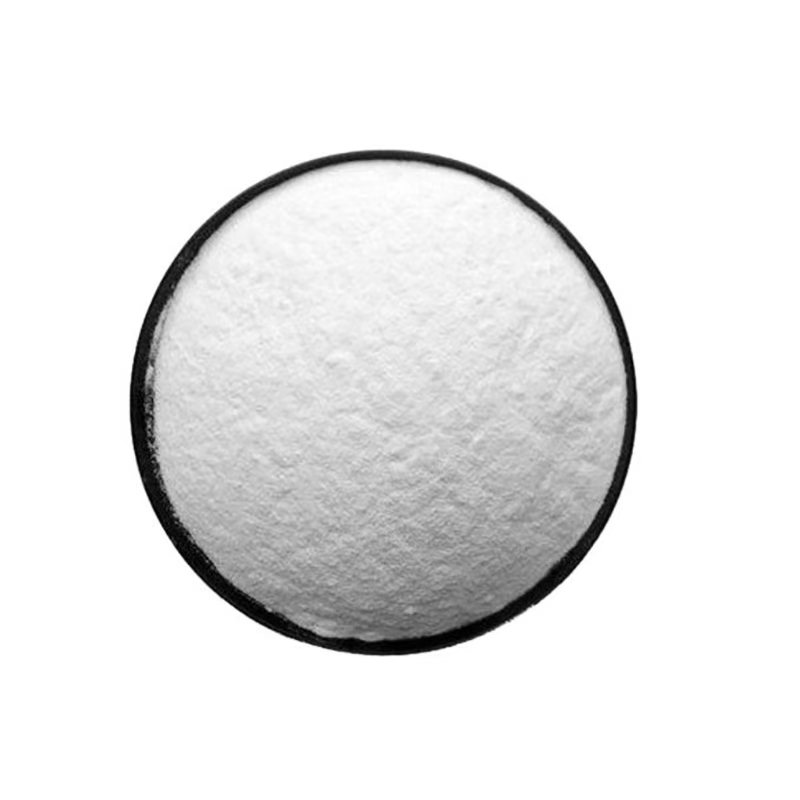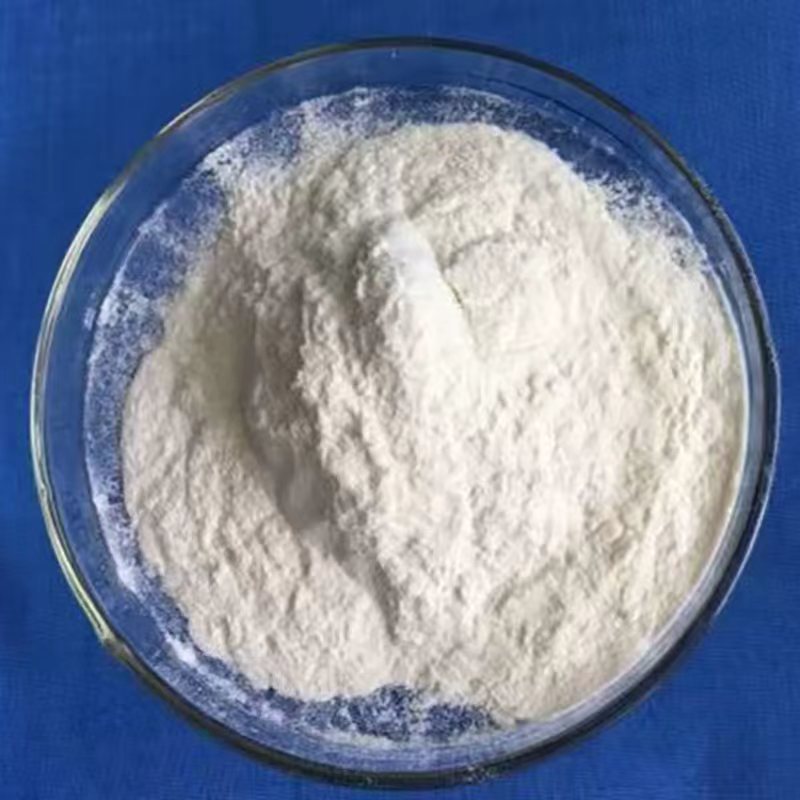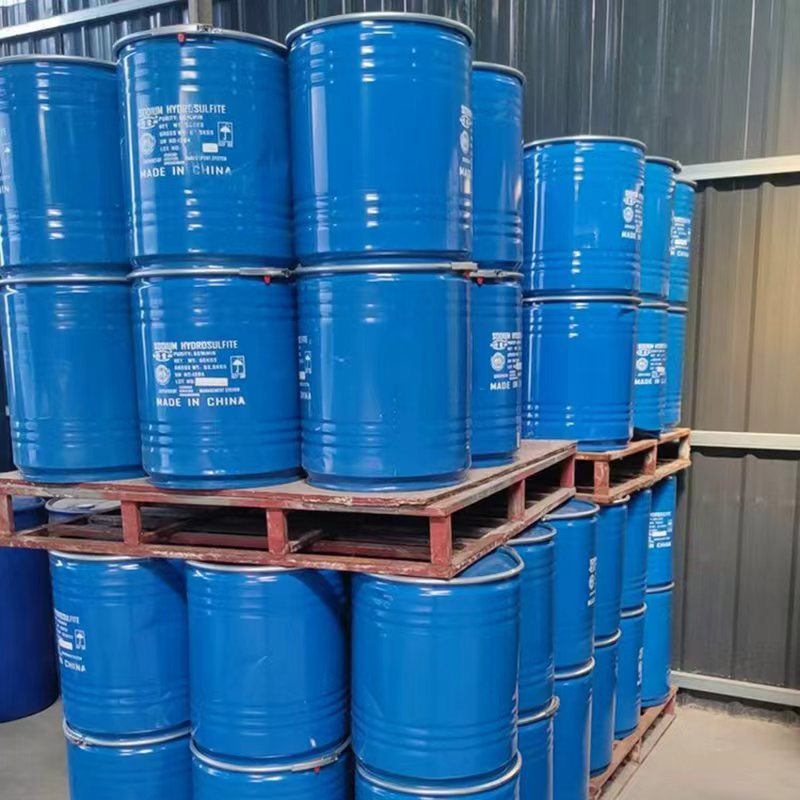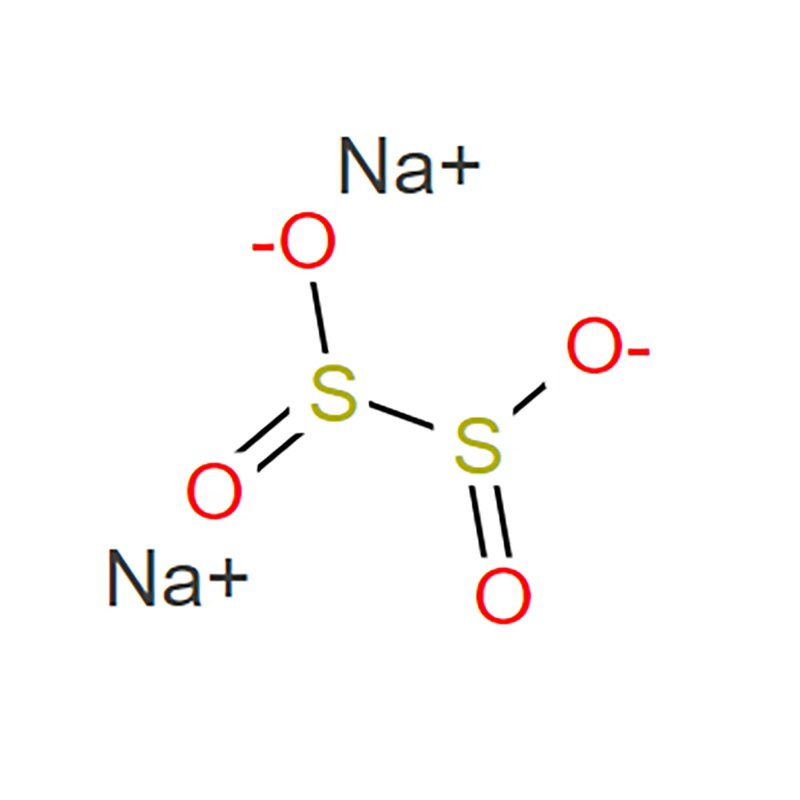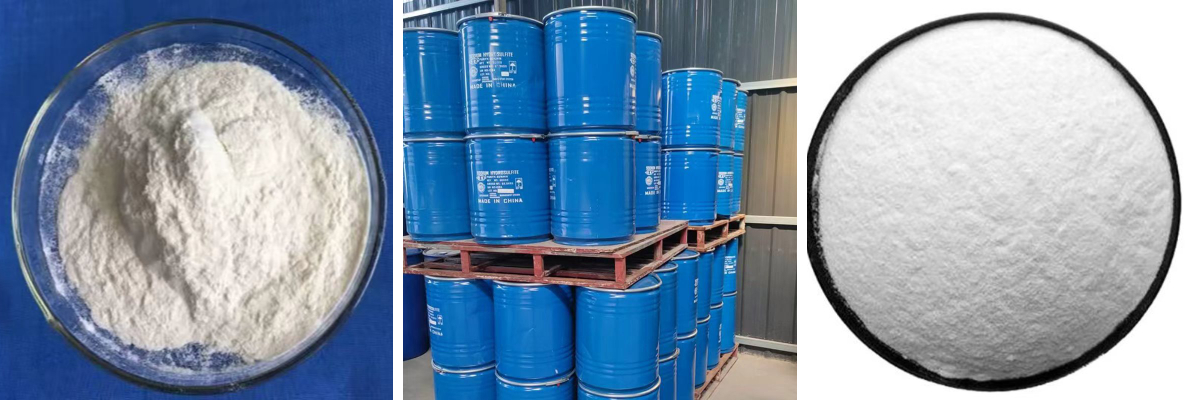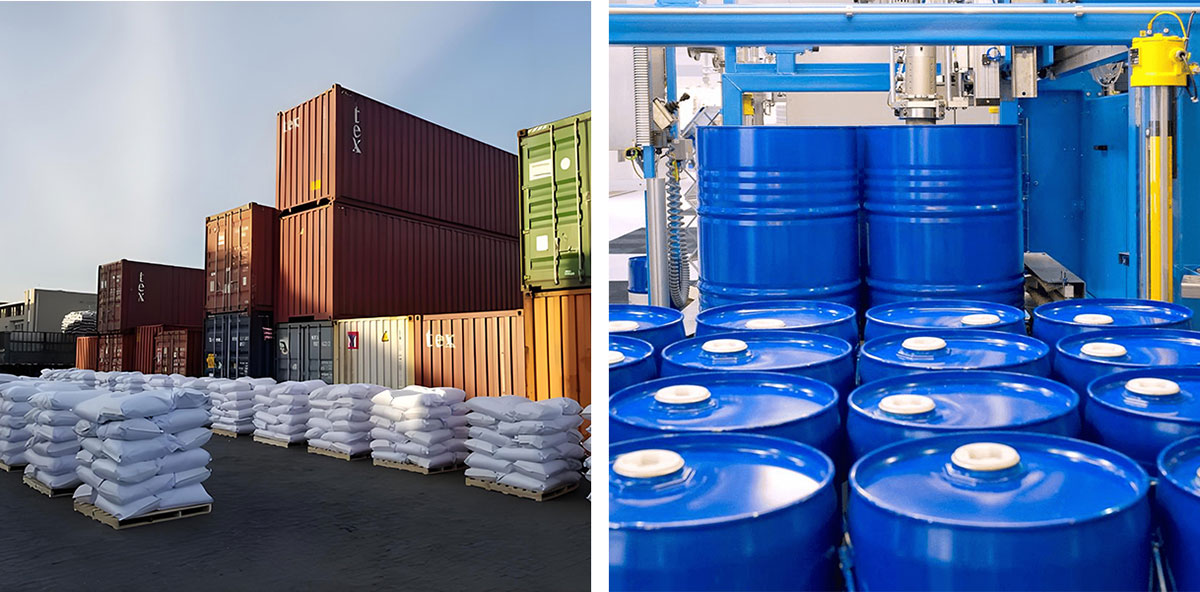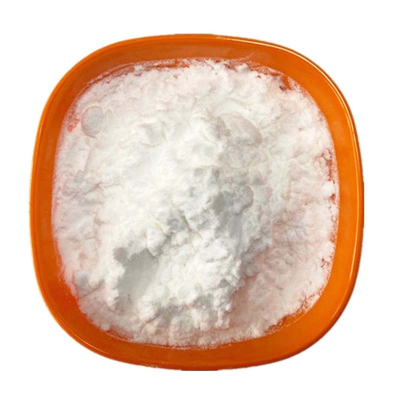Sodium Hydrosulfite
Sodium Hydrosulfite typically presents as a white to off-white crystalline powder, occasionally exhibiting a pale yellow tint, and emits a characteristically pungent odor associated with sulfur oxides. It demonstrates excellent hydrophilic properties, being freely soluble in aqueous solutions.
Primary Applications
Leveraging its strong reducing power, sodium hydrosulfite plays a critical role across multiple industries:
Textile Industry (Primary Application)
Vat Dyeing and Printing: Serves as a reducing agent to solubilize dyes for application onto fibers, followed by oxidation to develop the final color. This process is central to indigo dyeing for denim.
Bleaching: Used for bleaching natural fibers (e.g., cotton, hemp, wool) and rayon.
Pulp & Paper Industry
Pulp Bleaching: Employed in bleaching wood pulp to produce high-brightness paper.
Food Industry
Food Additive: Functions as a bleaching agent and preservative, primarily for treating certain sugars (like rock sugar, white sugar), dried fruits, preserved fruits, and starch noodles. Its purpose is to achieve a whiter appearance and prevent oxidative discoloration. On food labels, it is often identified as "Sodium Hydrosulfite" or by its E number, E223.
Chemical Synthesis & Laboratory
Used as a versatile, strong reducing agent in the synthesis of various organic and inorganic compounds.
Applied in analytical chemistry for reductive titrations.
Environmental Protection & Wastewater Treatment
Used in treating wastewater containing heavy metal ions. Through reduction, it converts highly toxic ions (e.g., hexavalent chromium, Cr⁶⁺) into less toxic or more readily precipitable forms (e.g., trivalent chromium, Cr³⁺), facilitating their removal.
Safety and Hazards (Extremely Important!)
Sodium hydrosulfite is classified as a high-risk chemical and must be handled with extreme caution.
Spontaneous Combustion: The dry powder can rapidly oxidize, generate heat, and spontaneously ignite upon exposure to air, especially moist air.
Explosion Hazard: Its dust can form explosive mixtures with air when suspended at certain concentrations, posing an explosion risk upon contact with open flames or heat sources.
Toxic Gas Release: Upon contact with water, acids, or when heated, it decomposes and releases sulfur dioxide (SO₂). SO₂ is a toxic gas that strongly irritates and corrodes the eyes and respiratory tract; substantial inhalation may lead to pulmonary edema or suffocation.
Health Hazards: It is irritating to the skin, eyes, and mucous membranes.
Storage and Handling Precautions:
Airtight Storage: Must be tightly sealed and stored in a cool, dry, well-ventilated area.
Moisture and Water Prevention: Keep away from water sources and damp environments.
Air Exclusion: In industrial settings, it is often stored under a nitrogen blanket for protection.
Away from Ignition Sources/Heat: Strictly prohibit storage alongside oxidizers and acids.
Personal Protection: Operators must wear protective goggles, chemical-resistant gloves, and a mask/respirator.
Name | Chemical Formula | Common Name | Key Properties and Uses |
Sodium Hydrosulfite | Na₂S₂O₄ | Insurance Powder | Strong reducing agent; primarily used in dyeing and bleaching; highly unstable; hazardous |
Na₂SO₃ | - | Moderate reducing agent; used as a reductant, preservative, and dechlorinating agent; relatively stable | |
Sodium Thiosulfate | Na₂S₂O₃·5H₂O | Hypo, "Big Soda" | Weak reducing agent; mainly used in photographic fixing and as an antidote for chlorine exposure; can extinguish fires involving Sodium Hydrosulfite |
Sodium Metabisulfite | Na₂S₂O₅ | - | Exhibits reducing and bleaching properties; commonly used as a food preservative and bleaching agent (E223) |
Sodium Hydrosulfite (Product Specifications) | |||
Contents | Indexes | ||
90% Grade | 88% Grade | 85% Grade | |
Na2S2O4(%) ≥ | 90.0 | 88.0 | 85.0 |
Na2CO3(%) | 1.0-5.0 | 1.0-5.0 | 1.0-5.0 |
Water-insoluble(%)≤ | 0.05 | 0.05 | 0.05 |
Validity Period (Month) | 12 | 12 | 12 |
Appearance | White crystal powder | ||
Smell | Insipidity or a lit | the smell of SO2 | |
Remark:Dust-free SHS can also be su customer requirements | pplied according to | ||



